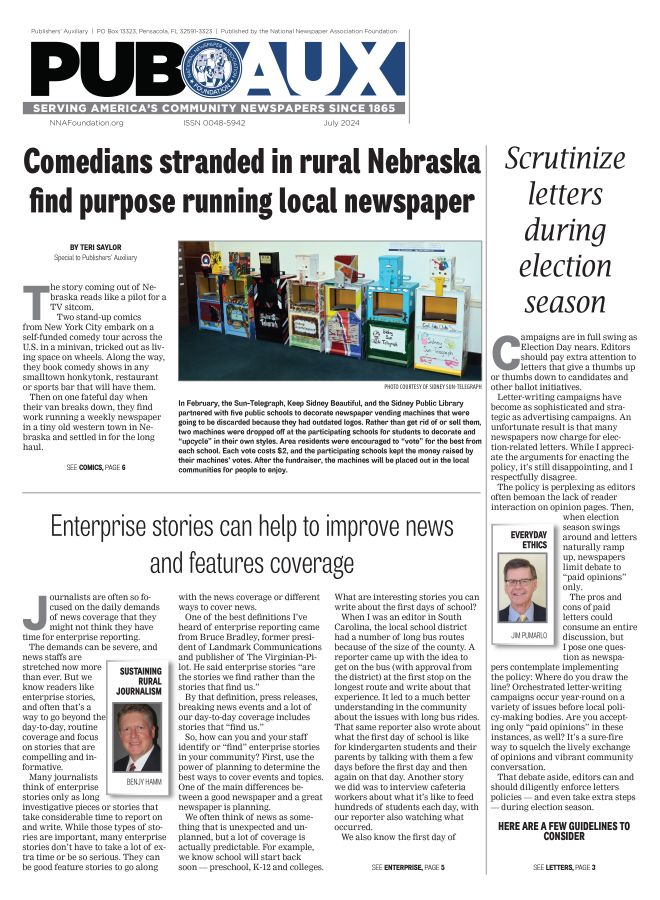Using county-level data to generate local stories
Oct 17, 2014
By Al Cross
Into The Issues
One of our favorite things we do on The Rural Blog is tell rural journalists about county-level data that can help generate interesting local stories. We had several items like that lately, along with several other interesting posts that could be localized.
Where did people living in your county move from, and where did those who left go? The Census Bureau collects that data, and breaks down migration patterns by employment status. We wrote about it at http://bit.ly/1tseGr1.
Emily Badger of The Washington Post alerted us to that service, and to county-level data on segregation in schools from The Urban Institute, using information from the National Center for Education Statistics. See it at http://tinyurl.com/qjcjbr8.
Rural Americans are less likely to live alone. That may be no surprise, but what about your county? The useful Stateline news service published an interactive map, and we picked it up at tinyurl.com/q8k4tr8.
Do any of your local police forces have surplus military equipment like that which caused controversy in Ferguson, MO, after unrest following the shooting of an unarmed black teenager by a white police officer? The New York Times did an interactive, county-by-county map; use it at tinyurl.com/pbzhj7p.
How do your female school-board members perform at board meetings? More than 40 percent of school board members are women, but a study cited in a new book found that “Unless they make up a supermajority of a board, women don’t comment and endorse motions as often as men do,” Education Week reported. We picked it up at tinyurl.com/q8k4tr8.
The economy is improving, but not so much in rural counties, the Daily Yonder reported, citing a federal report that blamed “slow rural population growth, a lower percentage of college graduates and a higher percentage of older residents in rural areas versus metro ones.” Read it at tinyurl.com/pbzhj7p.
How is your county fair doing? Budget cuts in some states are leaving county fairs with less support, Bloomberg News reported, citing the cancellation of the Macon County Fair in Illinois. We shared it at tinyurl.com/lw99b35.
Health stories
The need for doctors continues to be great in many rural areas. The shortage can be attributed in large measure to the lack of medical-school applicants from rural areas, The Atlantic reported. Read it at tinyurl.com/kthb247.
Some rural areas are benefiting from new schools of osteopathic medicine, which have been built largely in rural regions. Stateline did a story and we picked it up at tinyurl.com/mr2vkso.
States and non-profit groups will focus on rural areas in the next round of enrollments under in federal health reform, which begin Nov. 15, Kaiser Health News reported. We picked it up at tinyurl.com/ltt4tbv.
Domestic violence has become a bigger issue lately, because of the misbehavior by some NFL players. A study in Pennsylvania found that rural primary-care physicians rarely screen women for domestic-partner violence. Read about it at tinyurl.com/lbcvax5.
Mental-health services are often hard to get in rural areas, so Arkansas, Kentucky, Maine, New Hampshire, North Carolina and Tennessee have established mental-health licensing for pastoral counselors. Get the details at tinyurl.com/ngh8yts.
Rural journalism
The Rural Blog especially likes to highlight good rural journalism. Because we’re based in Kentucky, we publish more examples of it from the Bluegrass State, but we’re a national service and wish more people would tell us about good rural reporting that’s worth sharing. Here are our latest examples:
The Todd County Standard, a 2,500-circulation weekly in Elkton, KY, has kept the heat on state agencies that are supposed to protect children, following the murder of a 9-year-old girl by her foster brother after repeated claims to abuse were not acted on. Now Editor-Publisher Ryan Craig finds that the state has rarely followed up on abuse reports from schools, and in some cases has violated informants’ confidentiality. The paper has won the Kentucky Press Association contest for small weeklies seven years in a row. See tinyurl.com/p2le6ca.
Shelley Spillman of The Anderson News in Lawrenceburg, KY, was inspired to write a column about her victory over depression after the suicide of a local man who suffered from depression.
“This is not something we normally talk about and maybe we should. Maybe these people wouldn’t feel so alone,” she told our Tim Mandell in an interview. “I really enjoy people getting to know me, my real struggles in life and the things I’ve been through. It’s amazing how relating to people on a human-to-human level is one of the most difficult things to do. But it’s so important.” Our item with a link to her column is at tinyurl.com/lqleeqw.
We give the bitter with the sweet. Financial pressures are making newspapers less likely to fight battles for open government, Tim Gallagher, recently retired publisher of the Ventura County Star in California, wrote for Editor & Publisher. We picked up the article at tinyurl.com/ke2svsv.
If you do or see good work that deserves national notice or could help other rural journalists, by appearing on The Rural Blog, e-mail me at al.cross@uky.edu so we can put it on TRB at irjci.blogspot.com.
Al Cross edited and managed weekly newspapers before spending 26 years at The (Louisville) Courier-Journal and serving as president of the Society of Professional Journalists. Since 2004 he has been director of the Institute for Rural Journalism and Community Issues, based at the University of Kentucky. See www.RuralJournalism.org.







